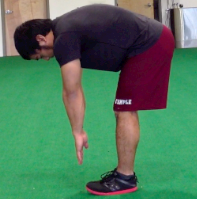This past weekend was tons of fun, as I was in New York for a good friend Jordan Syatt’s Maximum Strength Seminar. On Saturday I made my way to NYC, wandered around, met up with a few friends, made some new ones, and walked and enjoyed the first true “spring” weekend that the East Coast has seen in what seems like months. In any case, tons of knowledge was shared, brews were had, and of course, selfies for days.

So Jordan’s seminar was held at Reebok CrossFit 5th Ave, and admittedly, this is my first time stepping foot into any CrossFit facility, period. I’d like to think I have a pretty open mind when it comes to most things, so I took most of the things I saw for face value – the place had tons of space, lots of barbells, tons of kettlebells, lots of med balls – and no machines (besides rowing).
Jordan didn’t invite me for my good looks alone, but to also help coach and troubleshoot the big lifts for any of the athletes and coaches that were in attendance.

It is difficult at times to ascertain where the root of any problem comes into play when it comes to to addressing a stability or mobility issue. Sometimes a lacrosse ball, foam roller, and specific mobility drill are enough to see immediate changes in mobility/stability. Other times, it is a longer fix, that requires specific assessments to get to the root of the problem, along with a specific corrective exercise for the given individual. With regards to any general population client, I’d advise going through a full movement screen prior to adhering to an exercise program. CrossFit “boxes” can, for better or worse, mean several things to several different gyms – in fact, each one is unique and individual in its environment, members, and on that note, programming for members. With that comes knowledge base, coaching skill, along with athletic skill when it comes to movement. So there will no doubt be a large variety of members to come through any and all gyms, not even just CrossFit.
So, for a quick background, in my “normal” day to day activities many of the athletes I work with, whether they are hockey players in-season, or baseball players gearing up for their first games, may encounter some type of on-field injury. Despite the massive efforts with regards to screening, assessments, and tools that my facility encourages and uses, there is not much you can do when you come into contact with another person.
However, there are trends and patterns that are somewhat predictable when it comes to these sports – in baseball pitchers the throwing arm will normally display a lack of shoulder internal rotation when compared to the non-throwing arm. The “trail leg” when releasing the pitch will have more hip internal rotation than the “landing leg” when stride out occurs. In hockey, bilateral anterior hip pain or “pinching” is common. With all of these things in mind, programming corrective exercises and avoiding provocative positions is crucial to alleviating injuries, maintaining strength, and avoiding any unnecessary time on the bench.
When it comes down to it, CrossFit attracts people from all walks of life. Former athletes who are looking for that competitive feeling still, school teachers, entrepreneurs – anyone in reality – goes to CrossFit to lift and get shredded (on top of having fun). With that come past health history issues (joint degradation, different unpredictable screening outcomes, and otherwise unknown movement issues) that may or may not be addressed in the programming found within any given CrossFit exercise program.
But I get it, people just want to lift, get after it, and bro out.

At the end of the day, there are some people that will slip through the cracks, and you can’t necessarily “Rx” or “scale” (which, if I could be wrong, means to change up the movement entirely) your way to avoiding injury.

Sometimes you need to get screened by someone knowledgeable such as myself, or any coach that is competent enough to screen and assess for movement.
If that doesn’t work, regressing movement patterns to avoid the obvious pain is a way that I’ve programmed for athletes when individual assessments is out of the question. Mike Boyle always kept it simple by saying “If it hurts, don’t do it.” which is an approach I aim to take when I’m working with teams of 16 or more.
With that in mind, I’ve written an article on STACK.com on strategies for working out if you happen to have any discomfort or injuries in the lower body.
–> How to Workout When You’re Suffering From a Leg Injury <–
This is relatively useful for understanding what my approach is and how I view exercise programming for immediate injuries that cannot be “fixed”.
As always,
Keep it funky.
MA
